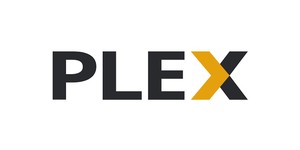
The US and the European Union have reached an agreement for a new data-sharing framework, dubbed the EU-US Privacy Shield, to replace the old Safe Harbour agreement.
Introduced in 1998 as an addendum to the the European Data Protection Directive, the Safe Harbour Privacy Principles allowed US companies to receive certification under the EU law - meaning EU-based companies could safely transfer customers' personal data to US partners or subsidiaries without falling foul of the law. It soon found itself at the heart of various snooping policies, in particular from US authorities using their control over US companies to access EU customer data held under Safe Harbour, which led to numerous complaints from privacy advocates that the spirit of the principles were being abused. Officially enshrined in law in 2000, the Safe Harbour principles remained in effect until October last year when the European Court of Justice ruled that 'legislation permitting the public authorities to have access on a generalised basis to the content of electronic communications must be regarded as compromising the essence of the fundamental right to respect for private life.'
The replacement for Safe Harbour is the EU-US Privacy Shield, a boldly-titled framework which European Commissioner Andrus Ansip has described as offering 'significant improvements' over its predecessor. Changes include the appointment of an ombudsman at the US State Department to take charge of responding to complaints forwarded by EU data protection officers along with binding assurances that any access to EU data held by US companies by security services will be subject to clearly-defined limitations, safeguards, and oversight mechanisms.
Time reports that reactions to the new agreement have been mixed, with some describing it as 'Safe Harbour with teeth' while the Centre for Democracy and Technology's Jens-Henrik Jeppesen warned the publication that 'absent reform of US surveillance law it is highly unlikely that the Privacy Shield will be deemed sufficient by the Court of Justice.'
The agreement will now face a period of review, following which it will be presented to the European Court of Justice.
Introduced in 1998 as an addendum to the the European Data Protection Directive, the Safe Harbour Privacy Principles allowed US companies to receive certification under the EU law - meaning EU-based companies could safely transfer customers' personal data to US partners or subsidiaries without falling foul of the law. It soon found itself at the heart of various snooping policies, in particular from US authorities using their control over US companies to access EU customer data held under Safe Harbour, which led to numerous complaints from privacy advocates that the spirit of the principles were being abused. Officially enshrined in law in 2000, the Safe Harbour principles remained in effect until October last year when the European Court of Justice ruled that 'legislation permitting the public authorities to have access on a generalised basis to the content of electronic communications must be regarded as compromising the essence of the fundamental right to respect for private life.'
The replacement for Safe Harbour is the EU-US Privacy Shield, a boldly-titled framework which European Commissioner Andrus Ansip has described as offering 'significant improvements' over its predecessor. Changes include the appointment of an ombudsman at the US State Department to take charge of responding to complaints forwarded by EU data protection officers along with binding assurances that any access to EU data held by US companies by security services will be subject to clearly-defined limitations, safeguards, and oversight mechanisms.
Time reports that reactions to the new agreement have been mixed, with some describing it as 'Safe Harbour with teeth' while the Centre for Democracy and Technology's Jens-Henrik Jeppesen warned the publication that 'absent reform of US surveillance law it is highly unlikely that the Privacy Shield will be deemed sufficient by the Court of Justice.'
The agreement will now face a period of review, following which it will be presented to the European Court of Justice.

MSI MPG Velox 100R Chassis Review
October 14 2021 | 15:04








Want to comment? Please log in.